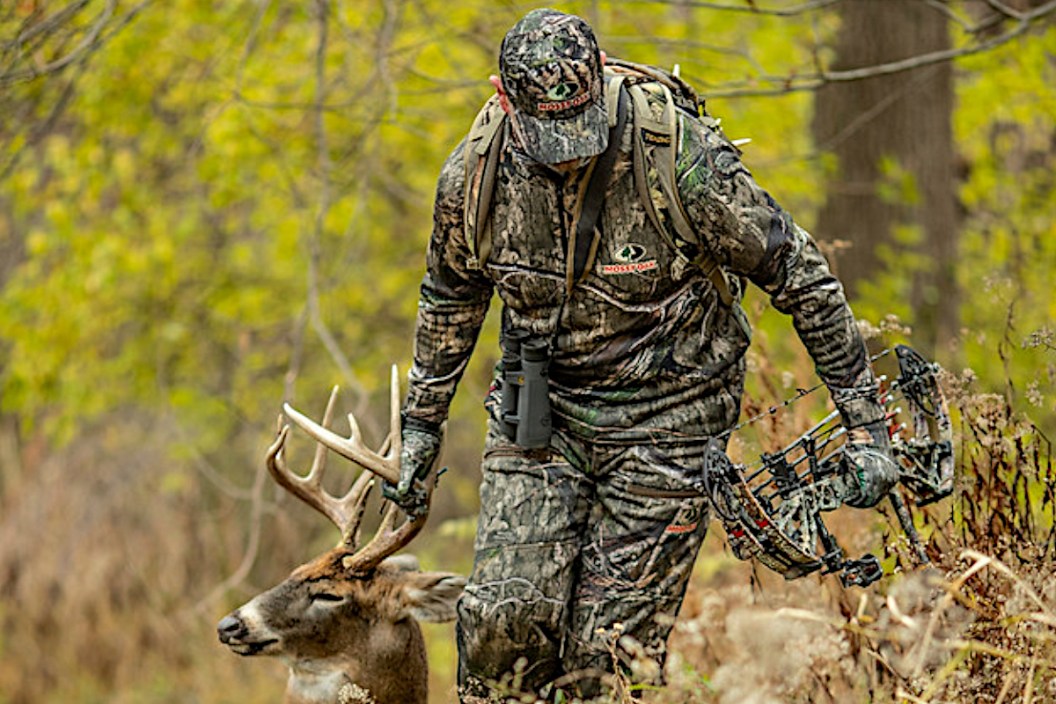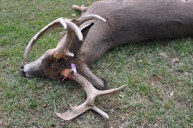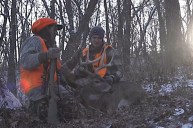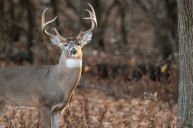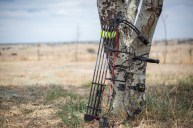Each hunting season, a large number of hunters will ruin their chances at a mature buck with various avoidable mistakes. Some of these simply rookie goofs that happen to many hunters during the early part of their hunting careers, while others come at the hands of seasoned hunters who fall victim to buck fever when the stakes are high.
We'll break down some of these common deer hunting blunders and the ways you can avoid them this year. All of these mistakes are far too common, and the majority of those guilty of making them don't even realize they're undermining their own hunting efforts.
Let's take a look.
Hunting a stand too much
This one applies to both public and private land hunters. The more hunting pressure you put on a spot, the more scent you leave behind and the quicker the deer catch on to what you're doing. It doesn't matter how much scent control to apply to your camouflage clothing, as the deer will pick up on you if you sit in the same treestand all season long.
It's important to have multiple stand locations to avoid hunting the same location day after day, and you should rarely hunt a single location on consecutive days. While it's true that you can shoot a deer your second day in the same stand, your odds are never as good that second day as they are on the first.
Establish multiple locations—especially during bow season—and rotate your sits based on the wind. Do this, and you'll have a lot more deer sightings this year.
Improperly changing travel routes
Hinge cutting is one of the most popular ways for deer hunters to alter deer traffic on their land, and it's increasingly becoming a more serious wildlife management tool. Selectively cutting trees to create new deer trails and travel corridors between bedding areas and food sources can also help to create the perfect stand sites for bowhunters. But, you'll want to be careful, as cutting the wrong trees you could change major trails into exit routes, causing your deer to cross the property line.
Many hunters also use hinge cutting to establish bedding and cover in their hunting area. You need to think strategically before setting one of these up, though, and also make sure not to fell too many trees, as overkill could create an unattractive area for deer altogether.
Do your research ahead of time and consider how you're altering the property before ever making a cut. There are expert consultants you can hire to share their opinion, too, but the most important takeaway here is to not rush the process.
Too many hunters on one property
We get it. It's tough to find a place to deer hunt on private land these days. If you own your own land, you probably have a lot of friends and family members asking if they can come out and hunt with you. It's hard to turn someone away, but many strong hunting properties have been ruined by people who don't know how to say no.
Every hunting property has a saturation point, which varies based on things like the amount of wooded area, the number of food plots, and the prevalence of impassable areas like ponds or swamps. If you only have 100 acres, you probably don't want more than two or three hunters sharing the area. You may have to make some difficult decisions this deer season, but the hunting drastically improves when you limit the amount of pressure.
Invading sanctuary areas
One of the easiest ways to ruin a prime whitetail property is to invade a sanctuary bedding area. Deer are sensitive and they have a need for safe spaces, especially during the rut or when the hunting pressure is high. If you have a bedding area on your property, make sure no hunters are entering it. When the deer realize there's a safe space with no hunter activity, they'll spend more time on your land, giving your more opportunities to ambush them during their commute to and from.
Some experts will say you should avoid sanctuary areas all year and not just during hunting season. It may be excruciating to not know what's going on in there, but you'll understand why patience is key when your buck sightings increase this season.
Too much non-hunting traffic
There are some things you simply must do on your property: maintaining vegetation around your stands, clearing fallen trees that are blocking your trails, and keeping up with your food plots. Aside from the needed maintenance, you should keep all non-hunting traffic to a minimum. This means less target shooting, less camping, less fishing, and less bonfires near where you hunt.
Which property do you think the deer are going to choose to spend their time on? Property A that has regular ATV traffic crossing it, or Property B that has none?
Additionally, we all know how exciting checking trail cams can be, but if you're out there once a week, you're likely to drive deer right off the property. I personally go every couple months, and that first wait of the summer is always a long one, but it's totally worth it when I pop the card in the computer and see all the bucks I would've scared off had I not been patient.
Using the wrong calls and scents at the wrong time
Nothing raises a giant banner to deer saying: "I'm hunting you!" like improper use of scents and calls. Clashing together a gigantic pair of shed antlers in early September archery season in a heavy-pressure state like New York or Michigan is going to raise a huge red flag for many deer. It may even push the smarter, larger bucks off the property for the rest of bow season.
Using a decoy or grunt at the wrong time will ring just as many alarms. Calling or grunting loud enough for someone to hear you 300 yards away is way too aggressive, as it's completely unnatural for deer behavior. Similarly, stuff like doe estrus scents are always going to be most effective in that restless chase phase many bucks go through right before the rut, but they lose their effectiveness in late and early season when food is the top priority.
Be subtle with your calls and attractants, and only use them when the timing is perfect based on wind and moon phases.
For more outdoor content from Travis Smola, be sure to follow him on Twitter and check out his Geocaching and Outdoors with Travis YouTube channels.
